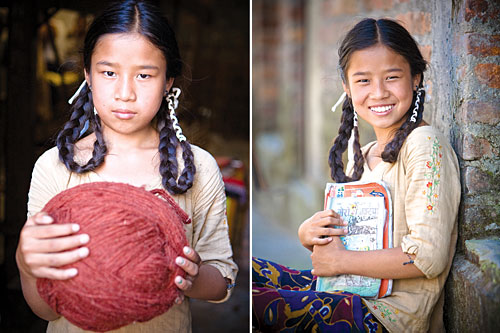 DAVID DUCHEMIN/WORLD EDUCATION |
Nearly 1.5 million Nepali children have never set foot in a classroom, don't know what a playground is and do not have a childhood. Instead they are toiling in restaurants, brick factories, massage parlours and homes. While the number of child labourers has dropped drastically in the past 10 years, new, more dangerous hotspots for child abuse have sprung up. Plateauing female literacy rate is likely to throw in more children into the workplace in the future.
The carpet industry is one of the few businesses to clean up its act and is no longer a colony of underage workers. The girl pictured above used to work as a wool spinner. She is now studying on a scholarship. But there are hundreds of thousands of others who find themselves trapped in a cycle of poverty and exploitation. The government has committed to eradicate the worst forms of child labour by 2016 and stop all children working by 2020.
Read also:
Cheated of their childhood, BHRIKUTI RAI
There are fewer Nepali boys and girls working, but the ones who do are in dangerous occupations


